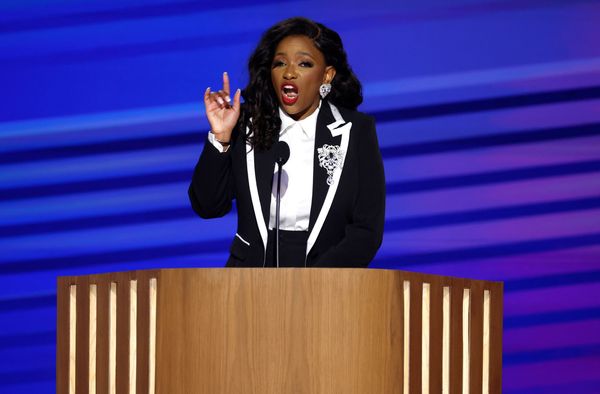
In the world of college basketball, the sight of jubilant students pouring out of the stands to celebrate with their victorious home team has long been a familiar image. However, recent incidents have brought attention to the safety risks associated with court storming, prompting calls for an end to this tradition.
One particular incident involving Iowa star Caitlin Clark colliding with an Ohio State fan after the Buckeyes' upset of the Hawkeyes has ignited a debate about the potential dangers of court storming. Since then, at least six more instances of court storming have been reported, raising concerns about the well-being of players, fans, and bystanders.
ESPN analyst Jay Bilas recently made headlines when he called for a complete halt to court storming. Bilas emphasized that fans should never be allowed on the court, given the foreseeable risks involved. 'I know it will keep happening and accept it,' Bilas stated. 'But it seems inevitable that something negative will happen, and we'll act surprised when it was foreseeable.'
Instances of court storming have continued in the aftermath of the Caitlin Clark incident, with various universities witnessing fans rushing onto the court after significant wins. South Carolina received a hefty $100,000 fine from the Southeastern Conference (SEC) after fans stormed the court following an upset victory over Kentucky. Similar incidents unfolded at Oregon State, Iowa State, Richmond, and Wyoming.




To deter court storming, conferences have imposed fines on schools if storming occurs before the visiting team and game officials have safely exited the area. However, many view these penalties as mere symbolic gestures and argue that individuals who participate should face more significant consequences, potentially even legal repercussions.
Gil Fried, a business professor at the University of West Florida and an expert witness in court cases involving injuries sustained in sports and entertainment venues, suggests that stadiums should establish clearly stated policies prohibiting fans from entering the court. Violators would then face ticket revocation or bans from the arena. This approach aims to discourage court storming while ensuring the safety of everyone involved.
However, implementing such policies presents its own challenges. Fried highlights the difficulty of identifying and apprehending violators in a chaotic situation. He suggests that arenas could potentially incorporate facial recognition technology—commonly used in soccer stadiums in Europe and Latin America—to prevent hooliganism. Nevertheless, legal and privacy considerations within the United States pose obstacles to adopting this approach.
The recent court storming at Iowa State's Hilton Coliseum following a win over No. 7 Kansas demonstrated a more controlled approach to ensure safety. Security personnel wearing orange vests promptly intervened at the final buzzer to separate players from fans during the handshake line. The visiting team, including the Jayhawks, exited through their bench area to avoid interacting with fans on the court. Measures like this can help to mitigate the risks associated with court storming.
Coaches and officials also worry about the potential for altercations or heightened emotions when fans and opposing players mix on the court. Minnesota coach Ben Johnson expressed concern that even a single provocative comment from a fan could escalate into an unnecessary confrontation.
Conferences like the SEC have taken steps to address the issue by significantly increasing fines for court storming. For example, a first offense now incurs a staggering $100,000 penalty. In SEC games, the fined amount is paid to the visiting school, while nonconference game fines contribute to the conference's postgraduate scholarship fund. This financial repercussion aims to make offending schools feel the impact of their actions more keenly.
However, critics argue that fines alone have not proven effective in deterring court storming. In fact, Jay Bilas pointed out that South Carolina's President Emeritus Harris Pastides openly admitted to rushing the court after the Gamecocks' triumph over Kentucky. Bilas suggests that the promotion of court storming through photographs and videos by schools and media companies further perpetuates the notion that fans have the right to storm the court, creating an apparent contradiction.
The debate surrounding court storming and its safety implications is ongoing. While it remains to be seen whether conferences and schools will adopt stricter policies or explore alternative solutions, concern for the well-being of players, officials, and fans demands that proper measures be taken to mitigate the risks associated with this long-standing tradition in college basketball.







